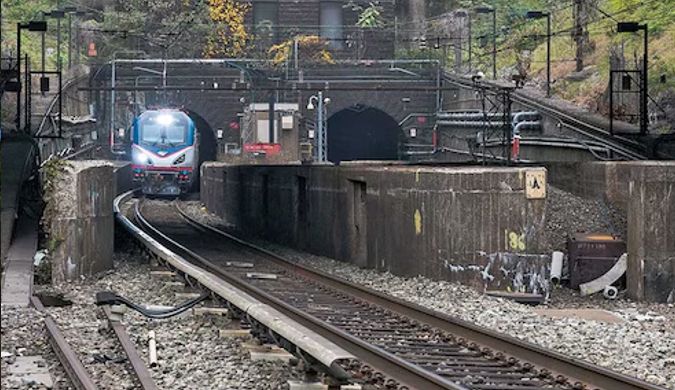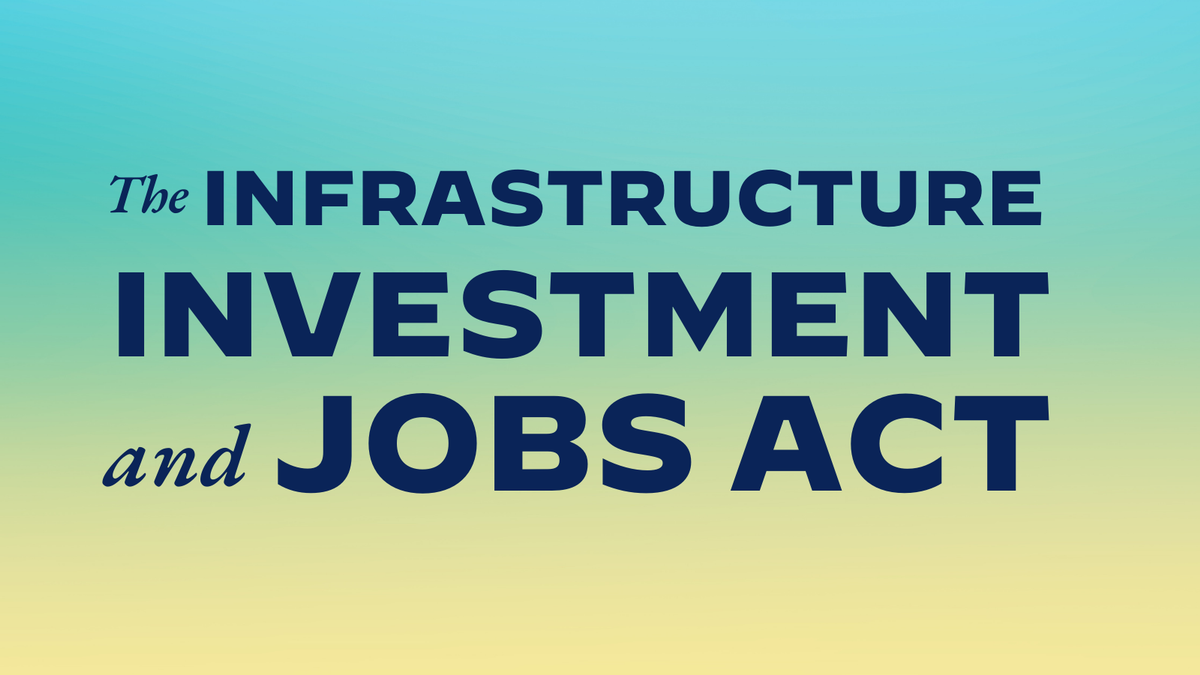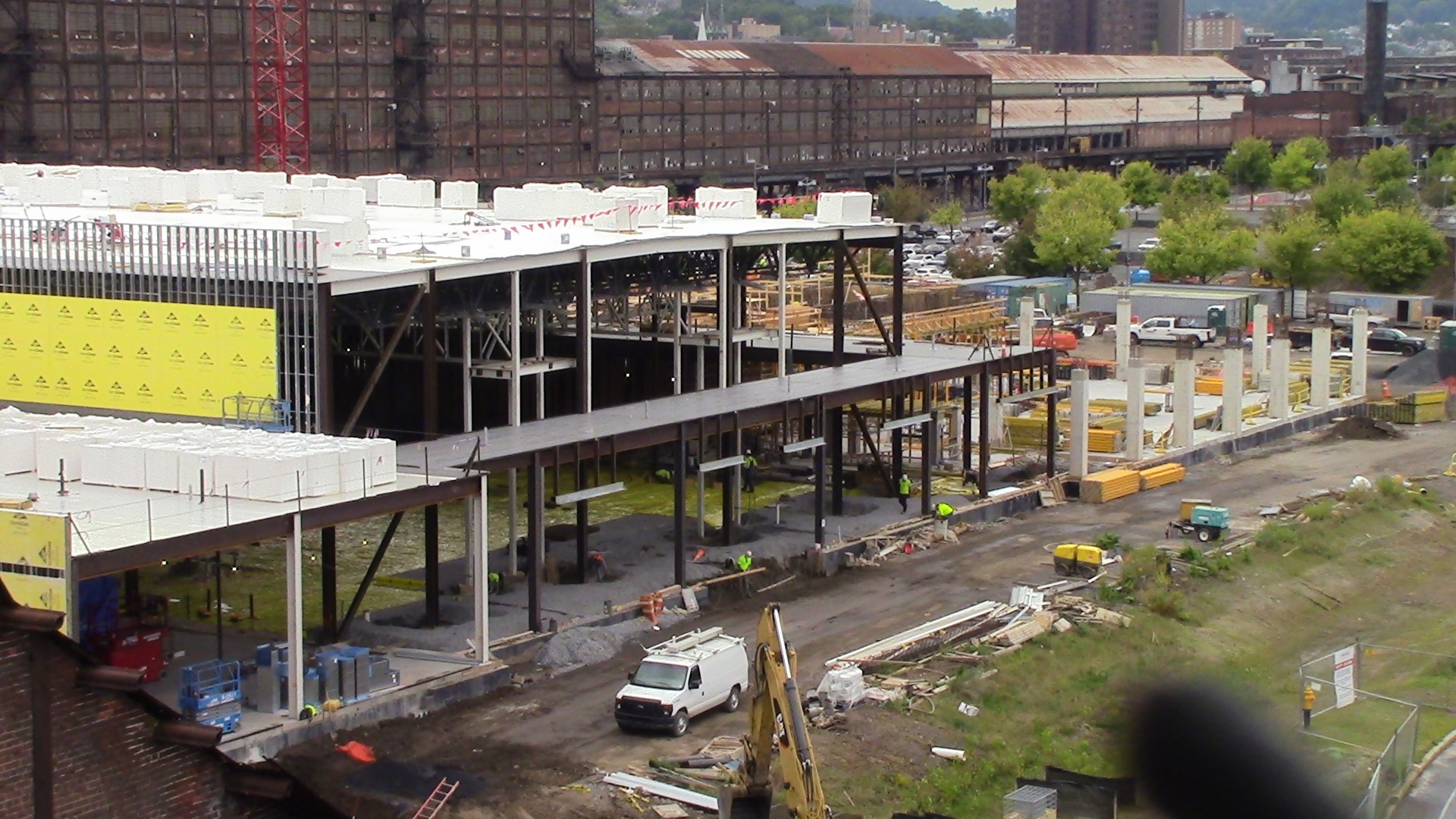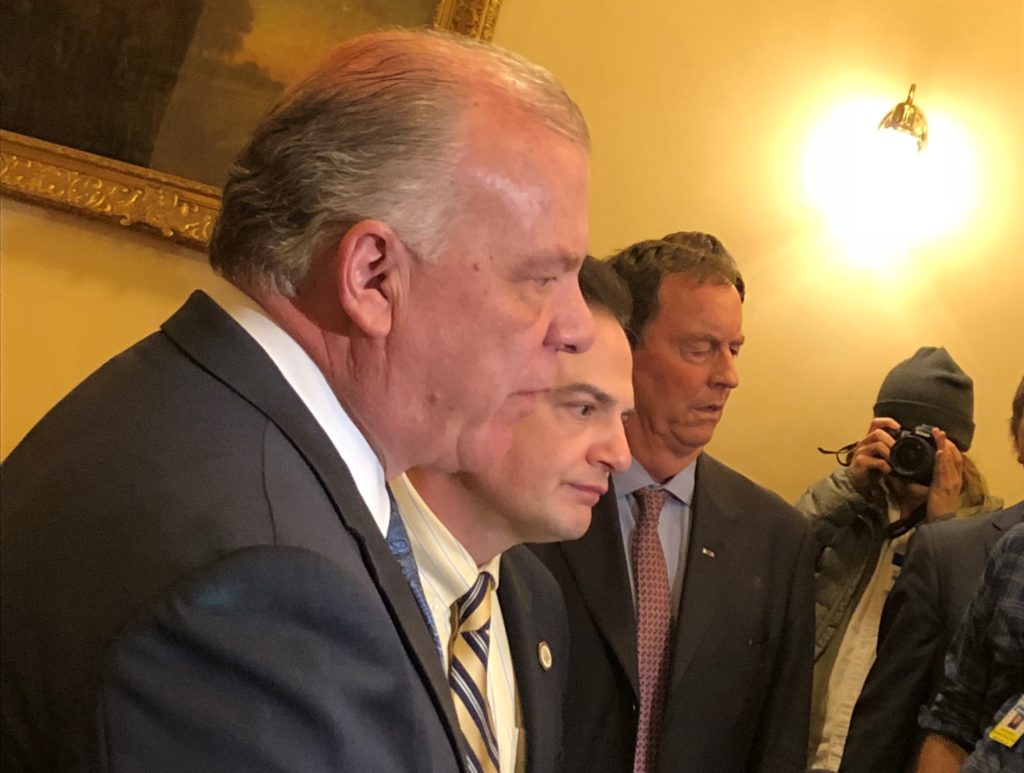Posted on: Monday, March 31 2025
Source: Patty Hapanowicz
The Department of Defense’s recent decision to suspend project labor agreements on large-scale construction projects is short-sighted and does not have the taxpayers’ best interest in mind.

Eliminating PLAs is an error that will cost the American taxpayers more money and leave workers operating in a less safe working environment.

By removing PLA requirements from federally funded construction projects valued at more than $35 million, the DOD is removing a reliable tool that ensures the successful and timely completion of taxpayer funded work.
Regardless of leadership within the Department of Defense, we should all agree, that public projects should serve the public in every sense and Project Labor Agreements do that. PLAs are agreements between all stakeholders in a project: the worker, the contractor, and the end user that set the terms for the project.
This ensures the job is completed on time and of the highest quality. PLAs also guarantee a skilled and local workforce that is paid fair wages and benefits.
For decades, federal construction projects have relied on PLAs, ensuring that major infrastructure and defense-related undertakings are completed on time and within budget.
These agreements set clear labor terms and conditions upfront, reducing the risk of cost overruns and settling any work disputes that may arise promptly with minimum disruption.
Research has consistently shown that PLAs promote competition, giving both union and nonunion contractors a chance to bid fairly under the same set of terms and conditions.
They also assist in pulling superior talent by ensuring that wages, benefits, and safety protections are up to area standards.
PLAs are especially important for the Department of Defense because when it comes to critical defense infrastructure, workers should be vetted and highly trained.
PLAs create an avenue for a pre-screened and security cleared labor force, reducing any possible chance of foul play.
DOD projects have an added layer of importance as they could potentially be necessary for national defense and could be mission critical.
This means there is additional pressure to ensure these projects are completed on schedule. PLAs help guarantee timely work by establishing clear workforce standards and a large enough workforce to prevent any possible issues jeopardizing the projects timeline, and our military preparedness.
The U.S. Government Accountability Office has put the matter plainly: PLAs are good for national security because they make defense construction projects more reliable and secure.
That standard should apply across the DOD and, by extension, the entire federal government. Instead, the DOD is veering in the opposite direction, but it is not too late to change course.
PLAs have long been a bipartisan solution for managing large-scale projects efficiently while also supporting American workers.
They were used, for example, on large infrastructure projects like the Hoover Dam and major military construction projects like the Uranium Processing Facility at Y-12 National Security Complex in Tennessee.
They guarantee something fundamental: that the large, complex construction projects the federal government undertakes will be completed on time and with the highest quality labor.
If the goal of this administration is to make the government more efficient, then eliminating PLAs is an error that will cost the American taxpayers more money and leave workers operating in a less safe working environment.
Posted on: Monday, March 24 2025
Source: WCBU
After a major Biden-era executive order mandating the vast majority of federal construction projects use project labor agreements suffered an initial loss in federal court this winter, a new report analyzing the use of these agreements in Illinois is refuting typical criticisms from opponents who claim they unfairly favor unionized labor.

The Chicago & Cook County Building & Construction Trades Council listed 300 N. Michigan Ave., a 47-story tower in downtown Chicago, as an active PLA project since 2020 under the contractor of Linn-Mathes Inc. Parts of the building are still under construction, but the completed portions are ready to

A project labor agreement, or PLA, is a binding contract between a government or private entity that needs a construction project done and a labor union. Before workers are even hired on a project, the two sides negotiate a PLA that sets wages, benefits, work conditions and often provisions for resolving labor disputes to prevent strikes or other work stoppages.
In Illinois – a state with historical ties to the labor movement and a government dominated by labor-friendly Democrats – PLAs have long been a tool that has kept union participation rates high in the construction industry.
Non-union industry groups and conservative organizations have long criticized the practice of governments using, encouraging or mandating PLAs, arguing that forcing projects to use union labor makes them slower and more expensive. But new research from the Illinois Economic Policy Institute and the University of Illinois’ Project for Middle Class Renewal found the opposite.
The study, commissioned by the state’s Capital Development Board, found that PLAs in Illinois have enhanced bid competition, helped to lower construction costs for taxpayers and increased business for firms owned by people of color, women and veterans.
Posted on: Monday, March 24 2025
Source: Construction Dive
The amount of project labor agreements used on federally funded projects will likely decrease, though they won’t completely disappear, legal experts say.

President Donald Trump signs an executive order in the Oval Office at the White House on Feb. 25, 2025, in the District of Columbia. Alex Wong via Getty Images

- A new executive order from President Donald Trump puts a metaphorical red X across numerous policies from the Biden administration, including promoting the use of project labor agreements. However, the exact outcome is unclear.
- Perhaps most notably for construction, the March 14 order rescinds a September 2024 action from former President Joe Biden that prioritized federal spending for projects that promote and benefit workers, such as collective bargaining agreements, which include PLAs.
- The impact of the order, however, is hard to predict. The executive order directs federal agencies and guides rulemaking, but doesn’t make immediate policy changes, Carol Sigmond, partner at New York City law firm Greenspoon Marder said. The impact should become clearer once the rulemaking and public comment period for deploying a new rule bears out, Sigmond said.
In a March 17 statement calling Trump’s action a “win,” Associated Builders and Contractors acknowledged it is unclear if it will revoke the entirety of the previous administration’s pro-PLA policies in various federal regulations.
Regardless of the specifics, PLAs on federal jobs face serious challenges.
Posted on: Thursday, March 20 2025
Source: NorthJersey.com
The project labor agreements include provisions to support apprenticeship programs, like the "Helmets to Hardhats" initiative that helps veterans transition to construction trades.

The new tunnel between North Jersey and Manhattan is meant to provide more reliable service along the Northeast Corridor for NJ Transit and Amtrak riders.

The economic stimulus promised from the $16 billion Gateway rail tunnel project beneath the Hudson River is starting to show up in workers' wallets — not just in North Jersey, but across the country, according to a new analysis.
The first five of nine construction contracts for the program are expected to support more than 20,000 jobs, $4.5 billion in economic output and $1.7 billion in wages, according to a report written by Gateway Development Commission staff and its financial consultant, Ernst & Young.
About 94% of the $2.2 billion in capital spending through those five contracts is expected to be sourced in the U.S.
And the report's authors estimate that every $10 spent on direct labor for those five contracts supports more than $17 in wages and benefits across the country.
"The latest analysis of current construction activity shows an immediate and quantifiable return on investment in big, bold megaprojects" such as the Hudson tunnel project, the report said. "As increasingly complex and large-scale operations accelerate on both sides of the Hudson River, so do opportunities for American workers and businesses."
The new tunnel between North Jersey and Manhattan is meant to provide more reliable service along the Northeast Corridor for NJ Transit and Amtrak riders entering and leaving Manhattan's Penn Station. Once it is completed, work will begin to rehabilitate the existing tunnel, which was badly damaged by Superstorm Sandy.
Construction workers account for about 11,200 direct jobs created by Gateway's first five contracts. That equates to $959 million in wages and benefits thanks to the labor agreements reached with trade unions that provide a consistent and qualified workforce for the projects and strong membership for the unions.
Posted on: Monday, March 17 2025
Source: Star News Group
The mayor and council are pushing for all major projects in the borough to be done by local contractors, as evident from an ordinance adopted at the last council meeting.


At the council meeting on March 10, an ordinance was unanimously adopted amending Chapter 2 of the borough code titled “Administration,” to include a new section called “Project Labor Agreement” (PLA).
The ordinance states, “The borough is committed to entering into fair agreements with contractors who perform projects for the Borough of Point Pleasant…(and) believes that it is appropriate and necessary to ensure that experienced and talented persons perform services on borough projects.”
It states, “The borough therefore mandates that all contracts entered into by the borough for work for and on behalf of the Borough, which contracts are awarded and in compliance with the provisions of the New Jersey Law…with a minimum contract cost of $5 million shall be subject to a Public Labor Agreement.”
Mayor Robert Sabosik told The Ocean Star, “This is guaranteeing that we employ local people for projects over $5 million. We are going to be using a PLA for the new recreation and senior citizen center.” He confirmed the borough defines “local” as individuals or companies from Ocean or Southern Monmouth County.
He said, “This creates a better environment and, what I firmly believe, a better building for the town of Point Pleasant.”
At Monday night’s meeting, the courtroom was packed with contractors, apprentices and union representatives, all in favor of the ordinance, with a few representatives speaking out during public comment.
Sergio Verdesco, a representative of the Eastern Atlantic States Regional Council of Carpenters, specifically representing the floor layers for that organization, said, “I wanted to thank you guys for this project labor agreement ordinance that will ensure that our members who live in the area, work in the area, spend their hard-earned money in the area, to do that work.”
Posted on: Wednesday, March 5 2025
Source: NJCU
JERSEY CITY, N.J. | New Jersey City University (NJCU) and the Hudson County Building and Construction Trades Council (HCBT) extended their historic Project Labor Agreement (PLA).


Project Labor Agreement originally signed on January 31, 2023 — during a memorandum of understanding (MOU) signing ceremony on campus on March 4, 2025.
The original agreement made NJCU the first public university in the state of New Jersey to execute such a Project Labor Agreement, which authorizes all university construction projects that exceed $5 million to be completed by union labor. Tuesday’s agreement, signed by NJCU Interim President Andrés Acebo and Hudson Building Trades President Patrick Kelleher, extends that partnership through at least January 1, 2027.
Posted on: Tuesday, January 16 2024
Source: Carpenter Contractor Trust
President Biden took another big swing to support workers by issuing a final rule that requires project labor agreements (PLAs) on federal construction projects costing more than $35 million.
.jpg)
Monmouth County Commissioner Director Thomas A. Arnone (left) and Cyndie Williams, executive director of Carpenters Contractors Trust visit union carpenters and other skilled labor tradesmen working on the Rumson-Sea Bright Bridge S-32 replacement project on Wednesday, October 11, 2023.VELOCITY MEDI

President Biden has recently taken another big swing to support workers by issuing a final rule that requires project labor agreements (PLAs) on federal construction projects costing more than $35 million.
This rule, which stems from an executive order he signed in 2022, will ensure all workers on these projects benefit from collective bargaining, fair wages and safe working conditions. It also aims to help the federal government complete its ambitious infrastructure agenda on time and on budget, while boosting local economies and creating more opportunities for skilled workers.
PLAs are a common-sense solution, one that’s neither new nor radical. They have been used successfully for decades on public and private projects across the country, from the Hoover Dam to Disney World. They have been endorsed by Democrats and Republicans — in New Jersey and beyond.
First, according to a recent NJ.com analysis, we rank 11th in the U.S. for income inequality, “a troubling indicator of the state’s shrinking middle class.” That gap widens among minorities and women. Second, we have billions of dollars in projects on the drawing board, fueled by Biden’s economic plan that aims to grow the economy from “the bottom up and middle out.”
The fair wages that result from PLAs will fuel local businesses, strengthen schools and inject vitality into communities. This isn’t trickle-down economics; it’s a rising tide lifting all boats, powered by the collective bargaining power of organized labor and the fact PLAs ensure the labor pool for federal projects is local. That means more jobs and income for the people who live, work and spend in the area.
So, these workers won’t be faceless cogs in a machine, part of some transient workforce. They’re Kyra from Little Egg Harbor, the welder who is putting money into her kids’ college funds. They’re Jeremiah, the carpenter from Rockaway working on a safe site with clear career pathways, his skills honed by top-notch union training.
Across New Jersey, towns from Brick to Parsippany and Jersey City are signing PLAs. In fact, Ocean County Republican Chairman George Gilmore, one of the state’s most powerful and influential Republican leaders, has pledged to throw his support behind PLAs. The support will do more good in communities here because New Jersey is leading the way with a threshold of $5 million versus the $35 million federal number. That means more local workers on more local projects – a key to rebuilding the middle class.
The agreements are not mandates to hire union workers but rather guarantees that workers on the project will be covered by a union contract, regardless of their affiliation. PLAs also include provisions to prevent strikes, lockouts and other labor disputes that could disrupt the project and cost taxpayers’ money.
On a broader scale, PLAs are a reflection of the rebirth of organized labor in the United States in recent years. Workers in various sectors, from health care to tech, have joined or formed unions to demand better pay, benefits and working conditions.
PLAs undoubtedly will help unions continue to kick open doors of opportunity for women and minorities. Both groups earn more than their non-union counterparts and the gap is wide. PLAs will help close that gap, here in New Jersey and beyond.
All of this makes our state better, fairer and stronger. And the men and women building a better future for all of us deserve the dignity, respect and fair share of the prosperity they create.
Cyndie Williams is the executive director of the Carpenter Contractor Trust, a labor-management trust formed to bond the relationship between the trained talents of union carpenters and their qualified signatory contractors.
Cyndie Williams is the executive director of the Carpenter Contractor Trust.
Posted on: Wednesday, November 8 2023
Source: Jersey Shore Online
BRICK – All future public construction projects undertaken by the township and exceeding $5 million will go to Brick residents since the governing body passed a Project Labor Agreement (PLA) during a recent Township Council Meeting.
.jpg)

“This chapter also creates opportunities to employ a substantial number of apprentices, thus ensuring that these projects will expand access to living wage careers in the construction trades for a new generation of workers,” said Mayor Lisa Crate.
She said the ordinance is a bipartisan effort that ensures good paying jobs for people who live in Brick Township.
“This Project Labor Agreement puts Brick residents first,” she said. “That’s something to be proud of, because as I said before, what’s best for Brick Township is not about Republicans or Democrats, it’s about what’s good and right for our entire community.”
Posted on: Wednesday, November 8 2023
Source: The Diamondback
Members of the Prince George’s County Council proposed a bill that would require project labor agreements to be added to all county-funded construction projects over $35 million in an effort to support trade workers in the county.

Members of the Prince George's County Council during a meeting on Oct. 17, 2023.

A project labor agreement is a type of collective bargaining agreement that establishes the terms and conditions of a construction project before construction is started. They can allow for clearer terms regarding wages and workers’ rights and benefits on a specific project, according to the U.S. Department of Labor.
Council member Edward Burroughs, who proposed and sponsored January and October project labor agreement bills, hopes the new bill will prioritize Prince George’s County residents by pulling from in-county local construction workers.
Posted on: Wednesday, October 25 2023
Source: Carpenter Contractor Trust
This week, the Prince George’s County Board of Education voted to require a Project Labor Agreement for the second phase of an ambitious school construction program.
.jpg)

The power of Project Labor Agreements: Two more win-win deals for workers and communities
This week, the Prince George’s County Board of Education voted to require a Project Labor Agreement for the second phase of an ambitious school construction program.
And just a few weeks ago, the Brick Township Council voted to assure all public construction projects valued at $5 million or more will be governed by a Project Labor Agreement.
The news from Maryland and New Jersey could not be better.
Both are huge victories for workers, taxpayers, students, and residents who will use these facilities. Their local leaders just guaranteed they will benefit from the quality, efficiency, and equity that PLAs provide.
Mayor Lisa Crate of Brick said it best: “What we’re really talking about is knowing that these projects will be done by skilled laborers who will do quality work and take pride in their work because this is their township.”
A PLA is a pre-hire collective bargaining agreement that sets the terms and conditions of employment for a specific construction project. These agreements typically cover issues such as wages, benefits, hours, safety, dispute resolution, and hiring practices. By establishing a uniform and predictable labor environment, PLAs help ensure projects are completed on time and on budget, while avoiding costly disruptions caused by labor disputes or shortages.
It's also important to note that PLAs promote fair and inclusive hiring practices that benefit local workers and communities. They often include provisions that set goals or requirements for the participation of local residents, small businesses, minority contractors, women, veterans, and other underrepresented groups. They also provide opportunities for training and apprenticeship programs that create pathways to careers in the construction industry for young people and low-income workers.
The benefits of PLAs are well documented by numerous studies.
For example, a 2021 Economic Policy Institute report found that PLAs on federal construction projects increased wages, improved health and retirement benefits, enhances productivity and safety, and expanded access and opportunity for workers of color and women.
Take a minute to let that soak in: Wages, benefits, productivity, safety and equity. We are seeing a powerful and important tool take root in our communities.
The Prince George’s County Board of Education recognized those benefits when it decided to adopt a PLA for the second phase of its Blueprint Schools Program, which aims to build six public schools to replace outdated and overcrowded ones.
The PLA will ensure the project is completed with high standards of workmanship and safety, while creating jobs and training opportunities for county residents. The agreement also aims to address allegations of wage theft and worker misclassification that marred the first phase of the project, which involved four construction companies now facing a lawsuit from five workers who claim they were underpaid and denied overtime pay.
The Prince George’s County Board of Education should be applauded for its leadership and vision in adopting a PLA for its school construction program. The same goes from Brick Township, and the others who are soon to follow.
These leaders have set an example for other public entities that are planning or undertaking large-scale infrastructure projects. PLAs are not only good for workers; they are also good for communities. They are a win-win solution that delivers quality, efficiency, and equity for all stakeholders.
Cyndie Williams
Executive Director
Carpenter Contractor Trust
732-395-8866
Posted on: Monday, July 31 2023
Source: Center for American Progress
PLAs and CWAs are powerful tools that help ensure federal investments are completed on time and on budget by well-qualified workers; support long-term labor stability

Center for American Progress

The Biden administration has successfully passed its signature industrial investments with the Infrastructure Investment and Jobs Act (IIJA), the CHIPS and Science Act, and the Inflation Reduction Act—laws that promise to strengthen the economy for years to come, grow the middle class, and support millions of high-quality jobs for working Americans.1 These laws invest billions of dollars in the country’s infrastructure, from rebuilding crumbling roads, bridges, and ports; to installing chargers and building battery factories to support the electric vehicle ecosystem; to reviving America’s leadership in semiconductor manufacturing. Already, public and private investments have dedicated billions of dollars in new funding,2 and government investments and subsidies will continue over the coming years in the form of grants, loans, and tax incentives.
Posted on: Friday, October 7 2022
Source: Eastern Atlantic States Regional Council of Carpenters
The Township of Parsippany is actively taking steps to ensure that construction projects in the community are supporting local workers and providing the best return on investment for taxpayers.
.jpg)
William C. Sproule Executive-Secretary Treasurer EASRCC

The Township of Parsippany is actively taking steps to ensure that construction projects in the community are supporting local workers and providing the best return on investment for taxpayers. They are doing this using Project Labor Agreements (PLAs). PLAs are transparent, agreed upon contracts that provide stability and structure on large scale construction projects. A PLA is an agreement between the owner of a project and the contractor that lays out both parties’ responsibilities on a particular construction project to ensure that the project runs smoothly and ultimately does not cost taxpayers additional dollars.
Planning is usually the best way to tackle any problem, and the Project Labor Agreement is the construction industries’ best tool to plan ahead. This agreement can establish terms of employment for workers, specifically wages and any fringe benefits. This is why unscrupulous contractors avoid them, allowing them to exploit and mistreat workers without clear terms and agreements. Unions, on the other hand, seek out PLAs because they create a stable foundation for a healthy relationship between labor and management, while protecting workers and the taxpayer.
Project Labor Agreements and unions are two of the best tools to protect workers from exploitation. A recent report by the University of California Berkeley Labor Center concluded that nonunion construction workers should expect to continue to be exploited and cheated, and lawful contractors should expect to find it more and more difficult to remain in operation.
According to the Berkeley report, nearly four out of 10 construction worker families nationwide are so poorly compensated that they are forced to enroll in one or more safety net programs, such as Medicaid or the supplemental nutrition assistance program, also known as SNAP – a higher rate than that seen in the general population. Compare this with their union counterparts, who end up making on average higher wages and have better benefits, including healthcare and a pension.
Project Labor Agreements help prevent workers from being paid poverty wages. Poor wages end up costing the taxpayer millions of dollars. For example, in New Jersey, 33% of families of construction workers are enrolled in one or more safety net programs, and these benefits end up costing the state and the federal government $325 million per year. Without PLAs, the taxpayer could ultimately foot the bill for unlawful contractors’ profits.
Through transparent and upfront terms, Project Labor Agreements prevent workers from being misclassified by their employers. It is estimated that more than 2 million construction workers in the U.S. work full-time but are misclassified as “independent contractors,” which allows their employers to pay them in cash, without declaring the expense to the government. This is illegal and enables the employer to avoid paying taxes or benefits.
Created in the 1930s, Project Labor Agreements are used widely, and not just because they protect workers. The private sector has utilized them with great success. Examples include Disney World, the Kennedy Space Center and Yankee Stadium.
The Township of Parsippany, its workers, and its taxpayers deserve Project Labor Agreements to protect workers and taxpayers from exploitative wages and costly jobs.
William Sproule is executive secretary-treasurer of the Eastern Atlantic States Regional Council of Carpenters, representing more than 41,000 carpenters who live and work in Delaware, The District of Columbia, Maryland, New Jersey, Pennsylvania, Virginia, and West Virginia.
Posted on: Tuesday, October 4 2022
Source: Carpenter Contractor Trust
Project Labor Agreements (PLA) bring order and specific responsibility to public construction projects. PLAs are binding agreements that call for collective bargaining between labor and contractors. In addition, they define the terms and conditions applicable to all workers – union and nonunion — on public construction projects.

Cyndie Williams, Director, Carpenter Contractor Trust

When you're driving by a construction site, do you ever wonder how all those moving parts meld together in an organized and coherent effort?
How do all those construction workers seem to approach the task with a single-mindedness that later results in a grand new structure? On a well-run project, the secret is a Project Labor Agreement.
Project Labor Agreements (PLA) bring order and specific responsibility to public construction projects. PLAs are binding agreements that call for collective bargaining between labor and contractors. In addition, they define the terms and conditions applicable to all workers – union and nonunion — on public construction projects.
It's what they deliver - an agreed-upon concerted outcome - that makes them so effective. They provide stability to larger construction projects while ensuring compliance with workplace safety and health laws, wage protection and equal opportunity.
The Township of Parsippany and its taxpayers can see the benefits of a PLA throughout the state of New Jersey. Many counties and municipalities in the state have supported Project Labor Agreements, including Morris County.
PLAs have existed since the 1930s because their components provide cohesion to each project.
These include:
Stability and Predictability.
PLAs add order by clearly defining each contractor and craft worker's responsibility. They address labor issues, designate cost standards, prevent shutdowns and are mindful of maintaining completion schedules. Construction sites might seem chaotic to outsiders, as trades work independently. PLAs provide coordination and leadership to this process while acting as a mediator to prevent any disputes.
During the construction cycle, there is little that decision makers - municipal leaders, developers, builders and contractors - find more problematic than misunderstanding and chaos. They both lead to an argumentative merry-go-round affecting timelines, costs and effective management. PLAs virtually eliminate these issues, often beforehand, because the solid relationship between labor and management prevent tension from escalating.
Diversity and Local Jobs
Nothing helps a project gain allies with public officials and the community at large than promoting the hiring of workers that are local constituents. And when a project can attract women or minorities, both of whom the industry has underserved, their enthusiasm increases. PLAs can vigorously encourage hiring efforts from small businesses, minority contractors and local workers while emphasizing government-required safety training. For example, a PLA can stipulate that a worker has undergone and obtained OSHA certification. This reinforces the "safety first" attitude of the workers and reduces accidents.
Training and Advancement
Most contractors want the most highly skilled, well-trained worker available. PLAs pay considerable dividends by preventing costly errors and accidents because of their emphasis on training. Union carpenters, for example, spend a minimum of four years with in-class and real-work experience before becoming a journeyperson. Union members are continuously trained in ever shifting technologies in the construction industry. Across all building trades, 150,000 union members work with thousands of contractors to build the best quality product for the residents of New Jersey.
Some anti-PLA rhetoric denounces PLAs by spawning myths.
They include:
- PLAs apply only to union workers. False. They apply to union and nonunion workers, and they don't mandate that workers must join a union.
- Some critics claim that PLAs reduce the number of bidders on public projects, thus raising costs. False. A 2020 study in the "Public Works Management & Policy" journal reviewed 263 bid openings for community college construction in California from 2007 to 2016. This first-ever study of its kind concluded that the presence or absence of PLAs did not alter the number of bidders on a project.
Why do PLAs myths exist, and why do certain companies object to using PLAs? It's simple. Because some companies want to reduce the competition. Without PLAs, they can skirt hiring mandates, disregard the need for certified skills among workers, and ignore efforts to provide job opportunities or training for women and minorities. Yet all these reasons pale against the most frequent motivation: worker exploitation. Worker exploitation is rampant in the construction industry. The unethical practice of paying below standard wages or paying workers off the books is eliminated when entities utilize a project labor agreement.
The core value that PLAs offer is transparency. It is a public document. Anyone can review it - municipal officials, organizations, construction companies and the general public - to assess whether the agreement is fair and makes sound business sense. Indeed, it raises the obvious question of why anyone would not support a PLA.
PLAs remain the fairest, most transparent and productive approach for conducting business in Parsippany and Morris County's construction industry. It also benefits taxpayers because PLAs control costs and ensure the availability of highly skilled talent for all local building projects.
And the added benefit in Parsippany and throughout New Jersey is that thousands of union trades people, with the best training in the industry, are prepared to meet any construction needs.
By: Cyndie Williams, Director, Carpenter Contractor Trust
The Carpenter Contractor Trust (CCT) is a labor-management trust formed to bond the relationship between the trained talents of union carpenters and their qualified signatory contractors to gain market share within the Eastern Atlantic States Regional Council of Carpenters.
Posted on: Monday, September 27 2021
Source: Carpenter Contractor Trust
What management policy attracts reliable talent, ensures meeting your project deadline, reduces conflict and boosts your bottom line? Consider a project labor agreement (PLA).

Wind Creek PLA Project Bethlehem PA

What management policy attracts reliable talent, ensures meeting your project deadline, reduces conflict and boosts your bottom line? Consider a project labor agreement (PLA).
PLAs are binding agreements that bring order and specific responsibility to public construction projects that call for collective bargaining between labor and contractors, outlining specific responsibilities. They define the terms and conditions applicable to all workers — union and nonunion — while ensuring compliance with workplace safety and health laws, wage protection and equal opportunity.
PLAs deliver:
Stability and Predictability. PLAs add order by defining each contractor and craft worker's responsibility. They address labor issues, designate cost standards, prevent shutdowns and are mindful of maintaining completion schedule. PLAs provide coordination and leadership while acting as a mediator in preventing any disputes from happening.
Diversity and Local Jobs
Nothing helps a project gain allies with public officials and the community at-large more than workers that are local constituents. PLAs can vigorously encourage hiring from small businesses, minority contractors and local workers while emphasizing government-required safety training.
Training and Advancement
Contractors want the most highly skilled, well-trained worker available. PLAs pay dividends by preventing costly errors and accidents because of their emphasis on training. Union carpenters, for example, spend a minimum of four years with in-class and real-work experience before becoming a journeyman.
PLA's core value is transparency. Anyone can review it — municipal officials, organizations, construction companies and the general public — to assess whether the agreement is fair and makes sound business sense. Indeed, it raises the obvious question of why anyone would not support a PLA.
It remains the fairest, most transparent and productive approach to conducting business in the construction industry while benefiting taxpayers, municipalities, construction businesses, and workers.
Posted on: Thursday, September 23 2021
Source: Insider New Jersey
Trenton – The NJ Senate approved legislation sponsored by Senate President Steve Sweeney and Senator Nick Scutari that would extend the use of project labor agreements


Trenton – The NJ Senate approved legislation sponsored by Senate President Steve Sweeney and Senator Nick Scutari that would extend the use of project labor agreements to more types of public building projects. The bill, S-1370, would extend PLAs to projects for highways, bridges, pumping stations, or water and sewage treatment plants.
“These agreements result in higher quality of work and safer conditions for workers,” said Senator Sweeney (D-Gloucester/Salem/Cumberland). “They also help ensure that projects are completed on time, which prevents delays and extra expenses. They are good for workers and the taxpayers.”
A project labor agreement is an agreement that a public entity, or the contractors it hires to perform a public works project, enters into with labor unions that sets labor and employment terms for the project.
“These agreements help ensure that large, complex projects are completed on time and on schedule,” said Senator Scutari (D-Union). “PLAs enable project managers to control costs and ensure that safety standards are maintained.”
This bill would expand the permissible uses of project labor agreements to allow public entities to enter into PLAs for any public works project that is subject to the New Jersey Prevailing Wage Act and that costs $5 million or more.
The agreements can prevent unions from going on strike or businesses from locking out their employees, and establish the terms to resolve labor disputes. The agreements can also require contractors to have a federally registered apprenticeship program.
The Senate released the bill by a vote of 29-6.
Posted on: Thursday, September 23 2021
Source: AFL-CIO
Building and construction trades workers are one of the hardest hit groups in the nation’s job crisis, they need PLA's.
.png)

Building and construction trades workers are one of the hardest hit groups in the nation’s job crisis. Yet state lawmakers, backed by construction industry CEOs, want to cut the wages of those workers by eliminating prevailing wage laws and project labor agreements (PLAs) on public construction projects. Prevailing wage laws protect communities and workers from unscrupulous contractors low-balling bids on taxpayer-funded construction projects by setting wage rates to the local or prevailing standard.
PLAs, which have been used for generations, are collective bargaining agreements between building trade unions and contractors. They govern terms and conditions of employment for all craft workers—union and nonunion—on a construction project. They protect taxpayers by eliminating costly delays due to labor conflicts or shortages of skilled workers.
